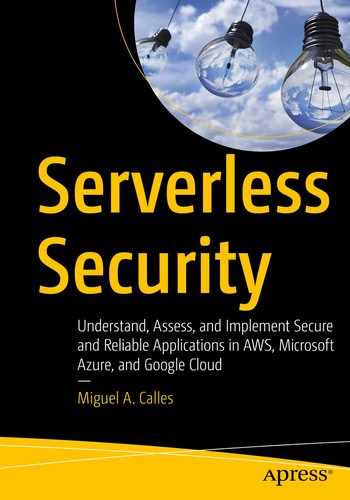0%
16Chapters
0-1Hours read
0kTotal Words
Book Description
Apply the basics of security in serverless computing to new or existing projects. This hands-on guide provides practical examples and fundamentals. You will apply these fundamentals in all aspects of serverless computing: improving the code, securing the application, and protecting the infrastructure. You will come away having security knowledge that enables you to secure a project you are supporting and have technical conversations with cybersecurity personnel.
At a time when there are many news stories on cybersecurity breaches, it is crucial to think about security in your applications. It is tempting to believe that having a third-party host the entire computing platform will increase security. This book shows you why cybersecurity is the responsibility of everyone working on the project.
What You Will Learn
- Gain a deeper understanding of cybersecurity in serverless computing
- Know how to use free and open source tools (such as the Node Package Manager, ESLint, and VSCode) to reduce vulnerabilities in your application code
- Assess potential threats from event triggers in your serverless functions
- Understand security best practices in serverless computing
- Develop an agnostic security architecture while reducing risk from vendor-specific infrastructure
Who This Book Is For
Developers or security engineers looking to expand their current knowledge of traditional cybersecurity into serverless computing projects. Individuals just beginning in serverless computing and cybersecurity can apply the concepts in this book in their projects.
Table of Contents
- Cover
- Front Matter
- 1. Introduction to Cloud Computing Security
- 2. Performing a Risk Assessment
- 3. Securing the Code
- 4. Securing Interfaces
- 5. Configuring the Application Stack
- 6. Restricting Permissions
- 7. Account Management
- 8. Secrets Management
- 9. Authentication and Authorization
- 10. Protecting Sensitive Data
- 11. Monitoring, Auditing, and Alerting
- 12. Additional Considerations
- 13. Finalizing the Risk Assessment
- Back Matter
